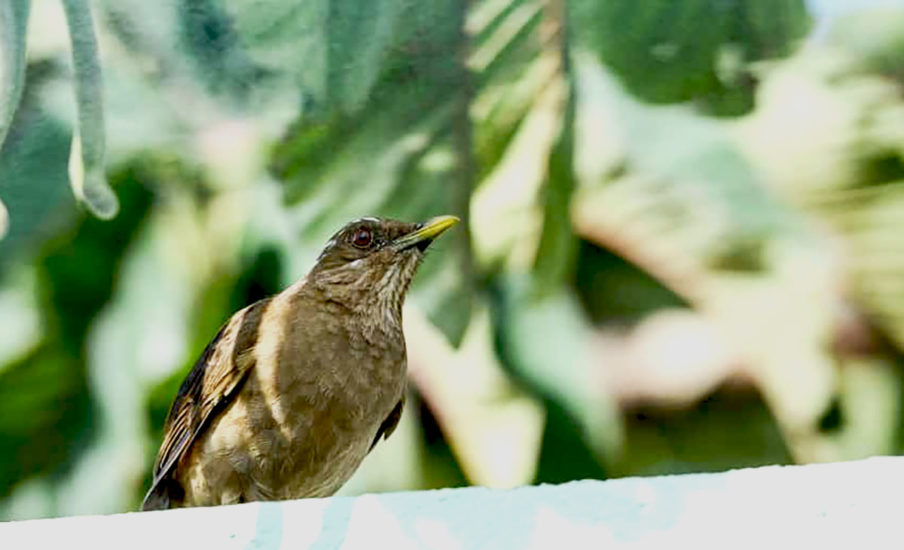
To most people the National bird of Costa Rica is known as the clay-colored thrush. To Costa Ricans, it’s known as the Yiguirro. But regardless of what it’s called, it is still a very important piece of Costa Rican culture.
The national bird of Costa Rica is the Yiguirro otherwise known as the Clay Colored Thrush. It can be seen in almost every region of Costa Rica and is recognized by its darker colored brown or olive brown upper half and a lighter color brown on its lower half.
In this article, we’ll be discussing how it became the national bird, when it happened, where they can be found, and the famous sound made by the bird. Read on to find out more.
When And Why Did It Become The National Bird?
The clay-colored thrush became Costa Rica’s national bird in January of 1977. It was under the government of Daniel Udober Quiros, the present at the time that the declaration was made.
The decision of making the Yiguirro the national bird largely came from the distinct song that is sung by the males during mating season, which signaled to the farmers that the rains were to come soon.
Aside from that, it’s also Costa Rica’s most common bird. In fact, it can be found in every region of the country. So if ever you find yourself in Costa Rica, wherever you are, take a look at the birds around you, and chances are you might just see a Yiguirro.
They aren’t too hard to spot either. The birds are approximately nine inches tall, they have a cream-toned stomach, an unmistakable yellow-brown plumage, and a very lightly striped neck. Another characteristic of the bird is how it hops instead of walks, just like other thrushes and robins.
Since the bird is found just about anywhere in Costa Rica, it’s also deeply ingrained in the country’s culture. The bird is frequently mentioned in folk tales and songs as they signal the coming rains or the arrival of green season.
It’s a bird known by all Costa Rican and is featured in numerous tales, novels, and stories that are distinctly Costa Rican. Add that to the fact that the bird’s song is unmistakable and signals the rainy season, it’s easy to see why it was chosen as the national bird.
What Kind Of Sound Does It Make?
As mentioned earlier, one of the most well-known characteristics of the bird is its sound. More specifically, the song that is sung by the males during mating season. The sound is unmistakable.
In fact, so unmistakable that it’s used to determine when the rains will come. This happens because of how the Yiguirro’s mating season coincides with the time of the year that it begins raining. This is usually seen as a blessing for the farmers as it also means that their plants will be nourished and ready for harvest in due time.
The call itself is described in many different ways. Some Costa Ricans simply describe it as a beautifully unique sound. And while that is true, a more detailed description would be that the male’s mating call sounds like a meow. Most visitors and a lot of locals have said that the sound is very similar to that of a cat, yet also very distinct.
You’ll find yourself in luck if you visit the country between March and May, as that is the time that the birds come out and sing their song. And since they can be found all over the place, you’ll surely hear it.
Final Thoughts
The people of Costa Rica and the government definitely chose familiarity over grandiosity when choosing their national bird. Instead of choosing the extravagant birds with bright colors that are hard to find and only live in distinct areas of the country, they chose the clay-colored thrush.
This bird doesn’t have the most extravagant set of feathers of a Quetzal, in-fact the yellow-brown plumage with the cream stomach is a very simple color combination for a bird.
But it’s this familiarity that makes the bird a true symbol of the country. It can be found everywhere as it is the most prevalent species of birds in the area. It has stood for a symbol of Costa Rica officially since 1977, but it has served as one for much longer.
Aside from being the bird that can be seen by anyone and everyone whenever they’re in Costa Rica, it also plays a big role in agriculture and the way the locals used to keep track of the seasons.
So next time you find yourself in Costa Rica, keep your eyes peeled for the Yiguirro, and keep your ears open to hear their beautiful song!


